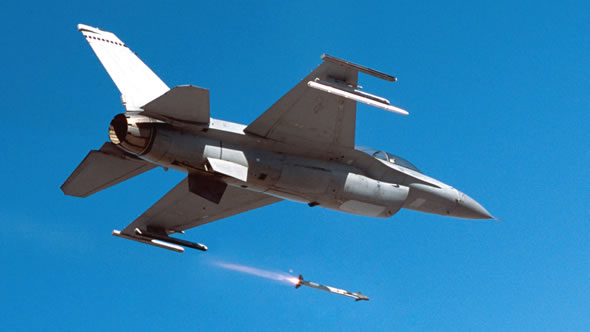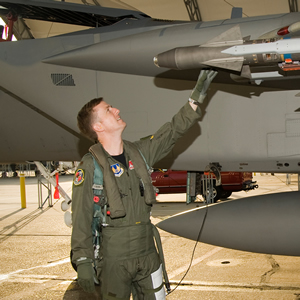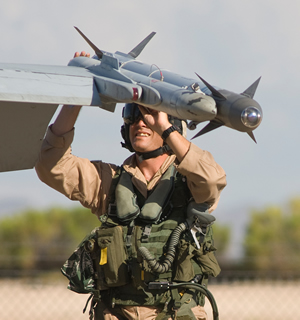The Raytheon AIM-9X Block II Sidewinder air/air missile has passed ‘Milestone C’ on June 24, 2011 – clearing the program for Low Rate Initial Production. Successful test firing at the Naval Air Warfare Center Weapons Division in China Lake, Calif. as part of a developmental testing of the missile that began in September 2010, are leading to AIM-9X Block II missiles toward final operational testing in 2012. Raytheon has delivered more than 3,600 AIM-9X Block I missiles to eight countries and is on contract to deliver missiles to two additional countries.


The Block II version of the Sidewinder AIM-9X is the latest version of the missile, and the first short range guided missile adapted for the latest fifth generation fighters. Among the improvements implemented in the new version are improved seeker performance and addition of a two-way data-link facilitating ‘Lock On AFter Launch’ (LOAL) capability, enabling the missile to operate from internal carriage systems of the F-22A Raptor and F-35 Lightning II stealth fighters. Other improvements include infrared counter-countermeasures, enhanced kinematics. According to the U.S. Navy, the Block II Relying on homing on a thermal image of the target, the new missile has ability to operate with immunity against modern threat radar counter measures such as Digital RF Memory Jammers, Towed Decoys, and Stealth airframes.
Following ‘Milestone C’ approval, Raytheon was authorized to enter low rate initial production. The company is expected to begin production of more than 5,000 operational AIM-9X Block II rounds for U.S. Navy and U.S. Air Force over the life of the program. Following the recent tests, is expected to be cleared for operational deployment in 2012. To date, more than 4,500 AIM-9X Block I missiles and 175 AIM-9X Block II captive air training missiles and test rounds have been fielded.

Sidewinder’s Surface Attack Capability
The U.S. Air Force has evaluated the use of AIM-9X and AIM-9X Block I missiles against surface targets, employing the missile’s imaging sensor as a surface target seeker. The first test was conducted in March 2007, as a U.S. Air Force F-15C fired an AIM-9X and destroyed a fast-moving armored personnel carrier. In April 2008, a U.S. Air Force F-16 launched an AIM-9X and sank a maneuvering boat. This was repeated in September 2009 with an AIM-9X fired from a U.S. Air Force F-16C fighter sinking a rapidly moving target boat in the Gulf of Mexico. However, this surface attack capability tested again with the Block I version in March and May 2010 delivered mixed results. The tests included seven captive carry flights and six live fire tests, and achieved 66% success rate. Four missiles scored direct hits of the ground mobile targets, one hit a different target than fired against, and one lost track on the selected target.
















